Mahabalipuram is a coastal town in Tamil Nadu, India, about an hour drive from Chennai. This peaceful little fishing town is best known for it’s UNESCO heritage site of temples and monuments built by the Pallava dynasty in the 7th and 8th centuries. The shore temple is likely the most photographed monument amongst all and is part of the Seven Pagodas theory.
When to visit
The best time to visit South India is Winter, from Nov to Feb, when the temperature is pleasant and it’s not too humid. During summers, the stones radiate heat making the tour during day a bit uncomfortable especially with kids. Sunrise and sunsets are specially magical but if you want to beat the crowd, visit early morning.
The secrets of Mahabalipuram
According to the inscriptions, these monuments are the sculptural legacy left behind by the Pallava kings Mahendravarman I and his descendants, Narasimhavarman I and Narasimhavarman II. However as per legend, it is believed that this city was founded by Bali who was the grandson of Prahlada (from the story of Vishnu’s worshipper, Prahlada and his father Hiranyakashyap). King Bali is said to have sacrificed himself to Vamana, Vishnu’s fifth avatar, following which he attained enlightenment becoming Maha Bali or the great Bali. While it does link to how the city may have got it’s name meaning “City of Maha Bali”, but because of lack of evidence, the origin of this city still baffles archaeologists and academics.
Seven Pagodas
The shore temple is a magnificent structure and acted as a nautical guide for approaching ships at the sea. The early European explorers however talk about Seven Pagodas instead of one and some believe that the copper domes at the top reflected the sun’s rays, acting as a nautical landmark. The debate on whether there really were such seven beautiful structures lining the shore or not is an ongoing one and we only wish we could have seen them all together.
Hidden Underwater City
In 2004, before the Tsunami struck and the ocean water pulled back exposing some more temple structure, refuelling the Seven Pagodas theory. The changed coastline also revealed some new sculptures on the beach, removing century old silt from the sites. The ASI and Navy conducted some sonar searches underwater and have discovered two more temple complexes and a cave temple. While these do not confirm that there really were seven pagodas, they still mean that this temple complex was bigger and grander. Surprisingly the Shore temple was hardly impacted by the large Tsunami waves while other buildings in near vicinity got swept away.
Was the city flooded?
Another mystery is how this city got destroyed. Some say that the city was swept underwater by a Tsunami or a flood, local myth says that Indra, the god of thunders and war, got jealous of the elegance of Mahabalipuram, and tried to submerge the whole city through a flood.
These monuments are very intricate and every stone seems to telling century old stories about India’s glorious past. Artefacts found during the excavations indicate that there is far more to be discovered and the underwater city remains a mystery for now.
Some tips specially if you are travelling with kids :
- The entrance fee is INR 30 for Indians and INR 500 for non Indian nationals.
- The monuments open from 6 am – 6 pm. Entrance into the shore temple generally stops by 5:30 pm so if you want to enjoy sunset, reach before 5:30 pm.
- You would need to walk quite a bit to explore the monuments. Start early so that you can beat the heat.
- There is a separate entrance fee for the lighthouse. Be careful with small kids on the steep steps and viewing deck.
- There are plenty of shops and restaurants outside the monuments. Do carry water with you and keep yourself hydrated.
- If you are travelling with kids, completing the tour on foot may get very exhausting. You can either drive or rent a cab or auto.
- Do hire a govt authorised guide to explore and unearth more of stories about Mahabalipuram’s heritage.
During our Mahabalipuram trip, we stayed at a lovely quiet beach called Covelong, about 20 minutes away from Mahabalipuram. Covelong beach is also a hub for surfers in India and you can take lessons to learn there.




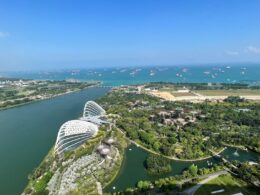

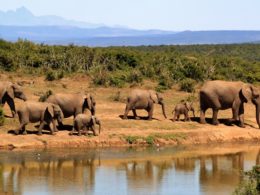





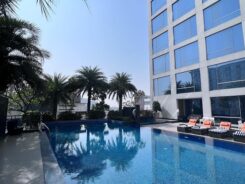

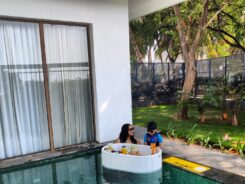




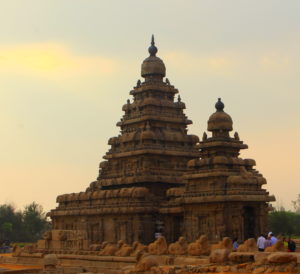
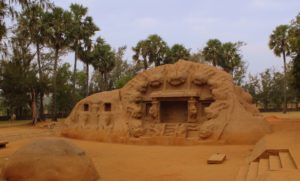
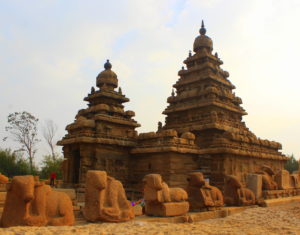
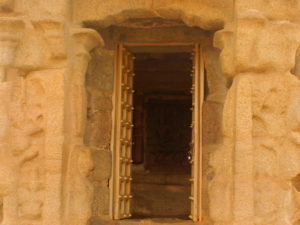
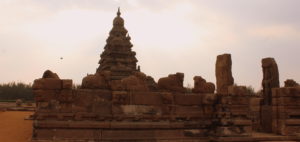
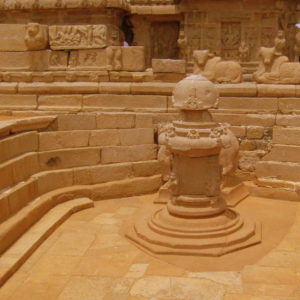
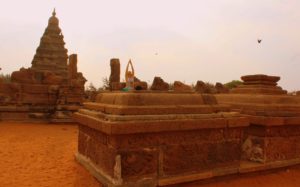
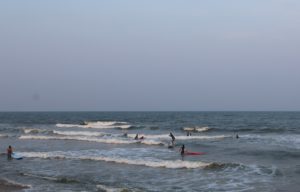
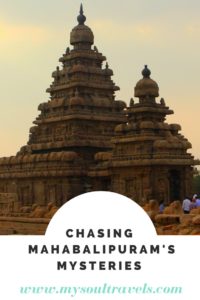

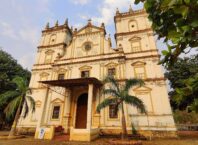
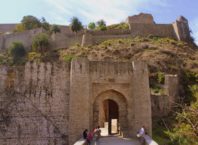








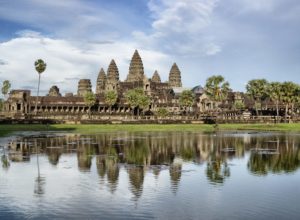
I read about Mahabalipuram, in book “The Covenant of Water” by
Abraham Verghese and had to look it up. AMAZING! No sure I’ll ever make it to India, but so glad to learn about these temples. I’m always in
Wonder what human beings can do!
This is like a dream vacation for my family! We get very into historical and beautiful land marks. Thank you for sharing! I am so jealous and would love to take this trip one day!
Thanks Maranda. I hope you do visit here some day. India has many such historical sites.
Mahabalipuram looks like an amazing place to visit! Added to my to-visit list, thank you!
Happy you liked it 🙂
This looks like such an amazing place to visit one day. I never knew about the city once being under water – that’s really neat!
Yes I discovered this part during our visit. It’s so unreal right!
These monuments are just truly amazing. I love the architecture, the sheer artistry and the intricate details. It would be so great to visit and see this in person one day. I found the information about the underwater structures that were found to be quite fascinating also.
Yes it’s a fascinating place
I have yet to visit Mahabalipuram but I am so intrigued by it’s mysterious past. Thank you for adding the tips for traveling with kids. This is a place I would love to expose my children to and teach them about the rich history.
Thanks for your kind words Shaliece. I am sure you guys will love it.
This place looks incredible! The legends are so interesting I’d love to visit and hire a guide to learn more!
You should definitely plan to visit sometime.